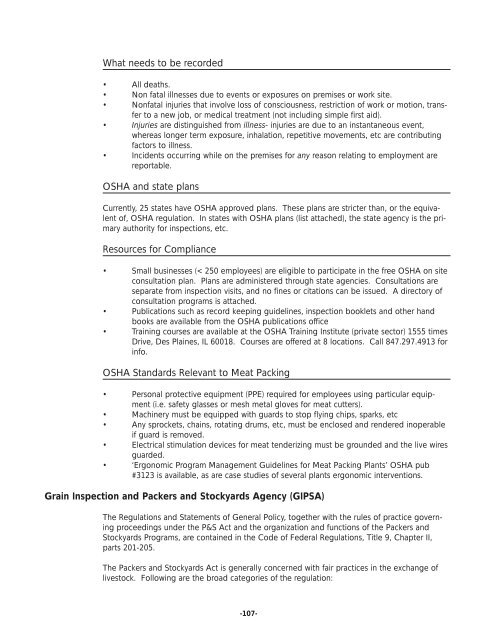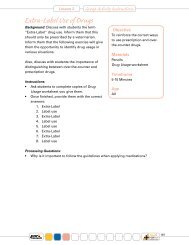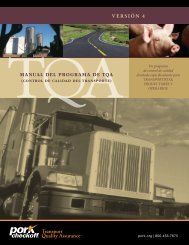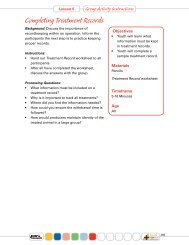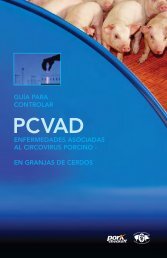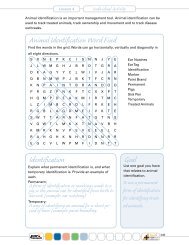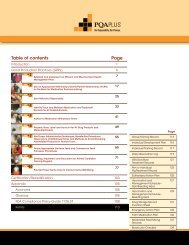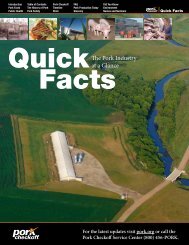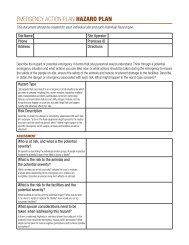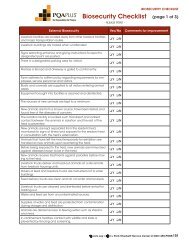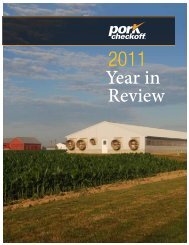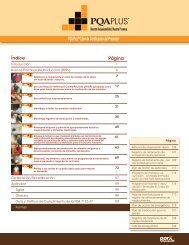Case Studies of Value Added Production and Marketing
Case Studies of Value Added Production and Marketing
Case Studies of Value Added Production and Marketing
Create successful ePaper yourself
Turn your PDF publications into a flip-book with our unique Google optimized e-Paper software.
What needs to be recorded<br />
• All deaths.<br />
• Non fatal illnesses due to events or exposures on premises or work site.<br />
• Nonfatal injuries that involve loss <strong>of</strong> consciousness, restriction <strong>of</strong> work or motion, transfer<br />
to a new job, or medical treatment (not including simple first aid).<br />
• Injuries are distinguished from illness- injuries are due to an instantaneous event,<br />
whereas longer term exposure, inhalation, repetitive movements, etc are contributing<br />
factors to illness.<br />
• Incidents occurring while on the premises for any reason relating to employment are<br />
reportable.<br />
OSHA <strong>and</strong> state plans<br />
Currently, 25 states have OSHA approved plans. These plans are stricter than, or the equivalent<br />
<strong>of</strong>, OSHA regulation. In states with OSHA plans (list attached), the state agency is the primary<br />
authority for inspections, etc.<br />
Resources for Compliance<br />
• Small businesses (< 250 employees) are eligible to participate in the free OSHA on site<br />
consultation plan. Plans are administered through state agencies. Consultations are<br />
separate from inspection visits, <strong>and</strong> no fines or citations can be issued. A directory <strong>of</strong><br />
consultation programs is attached.<br />
• Publications such as record keeping guidelines, inspection booklets <strong>and</strong> other h<strong>and</strong><br />
books are available from the OSHA publications <strong>of</strong>fice<br />
• Training courses are available at the OSHA Training Institute (private sector) 1555 times<br />
Drive, Des Plaines, IL 60018. Courses are <strong>of</strong>fered at 8 locations. Call 847.297.4913 for<br />
info.<br />
OSHA St<strong>and</strong>ards Relevant to Meat Packing<br />
• Personal protective equipment (PPE) required for employees using particular equipment<br />
(i.e. safety glasses or mesh metal gloves for meat cutters).<br />
• Machinery must be equipped with guards to stop flying chips, sparks, etc<br />
• Any sprockets, chains, rotating drums, etc, must be enclosed <strong>and</strong> rendered inoperable<br />
if guard is removed.<br />
• Electrical stimulation devices for meat tenderizing must be grounded <strong>and</strong> the live wires<br />
guarded.<br />
• ‘Ergonomic Program Management Guidelines for Meat Packing Plants’ OSHA pub<br />
#3123 is available, as are case studies <strong>of</strong> several plants ergonomic interventions.<br />
Grain Inspection <strong>and</strong> Packers <strong>and</strong> Stockyards Agency (GIPSA)<br />
The Regulations <strong>and</strong> Statements <strong>of</strong> General Policy, together with the rules <strong>of</strong> practice governing<br />
proceedings under the P&S Act <strong>and</strong> the organization <strong>and</strong> functions <strong>of</strong> the Packers <strong>and</strong><br />
Stockyards Programs, are contained in the Code <strong>of</strong> Federal Regulations, Title 9, Chapter II,<br />
parts 201-205.<br />
The Packers <strong>and</strong> Stockyards Act is generally concerned with fair practices in the exchange <strong>of</strong><br />
livestock. Following are the broad categories <strong>of</strong> the regulation:<br />
-107-


